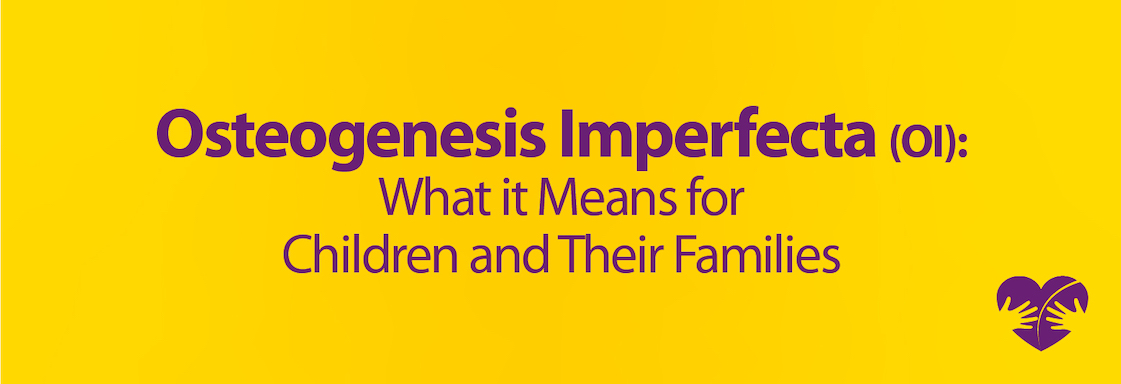Osteogenesis Imperfecta (OI) is a genetic disorder that impacts thousands of families across the world. Also known as brittle bone disease, OI is characterized by bones that do not form normally or easily fracture, even with impact as minor as a sneeze.
OI is a lifelong disease, and a diagnosis of OI can be life-altering, both for the patient and their loved ones. Let’s take a look at what OI is, what it looks like to live with OI, and how OI impacts families.
What is OI and how is it caused?
OI is a genetic disorder that results in soft bones. Most children with OI have a defect in one of the genes passed from their parents. The mutations that cause OI are related to the genes that create and manage collagen.
Collagen, also known as the body’s building block, is an essential protein that the body uses to strengthen bones and build connective tissues such as tendons, ligaments, and the whites of the eyes. In patients with OI, the body either creates collagen that doesn’t function properly or too little collagen, leading to brittle bones.
How common is OI?
Approximately 1 out of every 20,000 people are diagnosed with OI. However, there are 15 different types, ranging from mild to severe.
The most common type of OI is Type I, which accounts for about half of all OI cases. Patients with Type I have the mildest symptoms of OI and typically experience less than several dozen fractures in their lifetime.
Type II OI is the most severe form of OI and occurs in approximately 10% of all OI cases. For patients with Type II OI, it is rare to live more than a few weeks after birth. Type III occurs in about 30% of all OI cases and is severe, but it is possible for the patient to have an average lifespan. All other types of OI occur extremely rarely and vary in severity.
In the United States alone, between 25,000 and 50,000 people are estimated to have OI. It occurs equally across racial groups and genders.
What are the symptoms of OI?
Symptoms of OI (and their severity) depend on the type of OI the patient has. Some of the most common symptoms include:
- Bones that break or fracture easily
- Blue or gray tint to the whites of the eyes (also known as sclera)
- Brittle teeth
- Skin that bruises easily
- Hearing loss over time
- Spinal curvature
What is it like to live with OI?
Although there is no cure for OI, there are various forms of treatment available to manage symptoms, including frequent exercise, water therapy, medicine to improve bone strength, and implementing a healthy diet.
With consistent treatment, therapy, and good nutrition, many people with OI live long, productive and healthy lives. However, people with OI are likely to experience hundreds of bone fractures in their lifetime. Leg, arm, ankle and wrist braces may be needed to support weak bones. Extra dental work will likely be required, as many patients with OI have brittle teeth.
How does OI impact families?
OI impacts thousands of families across the United States, and for most families, having a child with OI involves major changes to their way of life. This often includes frequent clinical visits and therapy appointments, learning how to become proper caregivers, and altering family recreation to activities that are safe for the child with OI.
As it may be difficult to find safe options for daycare, many parents choose to become full-time caregivers. Families often choose to relocate to homes that are safe for their child with OI, such as one level houses or homes that have low light switches.
Learning how to properly support and care for a child with OI can be challenging, but it is more than possible. At CRIT, we’re here to support you and your family every step of the way.
References
- https://www.hopkinsmedicine.org/health/conditions-and-diseases/osteogenesis-imperfecta
- https://www.chop.edu/conditions-diseases/osteogenesis-imperfecta-children
- https://www.genome.gov/Genetic-Disorders/Osteogenesis-Imperfecta
- https://www.quantumrehab.com/meeting-your-needs/living-with-osteogenesis-imperfecta.asp
- https://www.ncbi.nlm.nih.gov/pmc/articles/PMC3852302/



